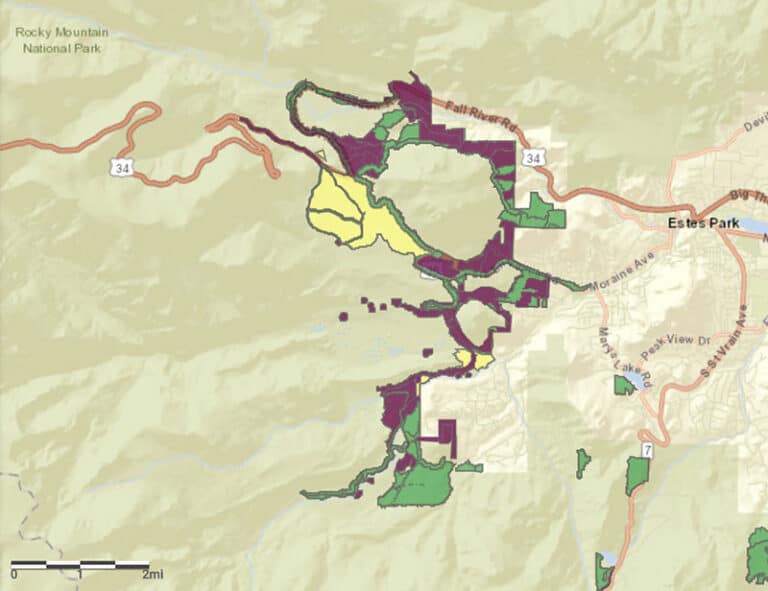
Fuel Treatments and Protecting Estes Park
One of the arguments against fuel treatments is basically that they are bad investments; 1. they don’t work, or 2. they do work, but not long enough to do any good without repeated applications, and 3. fires are unlikely to run into them (was it “only 1%” of areas are burned per year?). And yet.. we hear repeatedly of them actually working, usually in the sense of giving suppression folks some kind of an advantage. Also, if for example over 600K acres burned in Colorado in one year, you’d think that somewhere in the footprint of those acres have been some fuel treatments.
Firefighters on the Cameron Peak Fire tasked with handling the portion of the East Troublesome Fire threatening Estes Park did some serious firefighting Saturday, stopping the fire before it could spread into the wildland urban interface. They used existing fuel treatment areas where the vegetation had been thinned or removed, as an anchor from which to conduct a firing operation to widen the buffer between the fire and the community.
Paul Delmerico, the Operations Section Chief, Saturday night:
The fuels treatments helped significantly. Those fuels treatments are what gave us a really good defensive start to our day today when we saw that. It gave us something to work off of and to build off of.
The fire made a run just north of Moraine Park. Our firefighters picked up that [fuel treatment] and did a firing operation and held it just north of Moraine Park and then we had a couple of hand crews in there today and we picked that up with direct hand line. We were able to go up and over the ridge and back down and tie it in with existing road systems.
Our firefighters out there are doing a heck of a job. We had a really good day today, considering the fuel conditions and the weather conditions.
Are Size of Fires and Lack of Capacity Related?
From this post.
Wildland fire resources are scarce this time of the year with many crews losing their funding in September and October. Of the 113 Interagency Hotshot Crews in the U.S., only about 35 are still funded and available for fighting fire. In two weeks that number drops to around 13 according to projections in a September 30, 2020 planning document compiled by an Area Command Team (ACT).
There are also good comments on possible solutions.
As I was reading the Inciweb reports for some of the Colorado fires last week, it appeared that they were unable to get resources they had ordered because they were busy on other fires. It seems like that could have an impact on firefighting strategies and tactics, and ultimately acreage.
Just what the science has said all along. Nothing in forestry is 100%. But, application of established science based on sound priorities, as we have discussed many times b4, sure beats the “it’s not worth doing” opinion.
Wouldn’t it be nice if the Forest Service had permanent seasonal timber crews, who are also fire-qualified, and able to work more than 6 months out of every year?
Oh, yeah. Those darned FTE’s. Never mind! Can’t happen. Let’s pay those expensive ‘for-profit’ fire crews, instead.
I think most people agree that fuel treatments sometimes work, apparently if 1) there is a fire during the useful life of the treatment, and 2) the weather is cooperative. (And they work better in some ecosystems than in others.) I think the criticism would be that that they don’t look like good investments if you figure those probabilities into their effectiveness in light of the values protected (especially if those are just property values). But someone must have done the math on this?
Then again, maybe, just maybe, might there be other benefits of thinning, beyond possible wildfires?